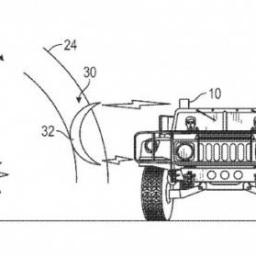Boeing granted patent for force field
 This month, Boeing was granted a patent for generating force fields that keep shockwaves from harming military vehicles. The Boeing Company's patent, "Method and system for shockwave attenuation via electromagnetic arc," was filed in May 2012.
This month, Boeing was granted a patent for generating force fields that keep shockwaves from harming military vehicles. The Boeing Company's patent, "Method and system for shockwave attenuation via electromagnetic arc," was filed in May 2012. "The idea is to harness electrical energy to stop or slow down the shockwaves created by explosions, which can do just as much damage as shrapnel." Boeing's plan would be to "marry a rapid explosion sensor with an arc generator to protect targets like military vehicles." Laser sources send out high-intensity laser pulses in the direction of the explosion. The laser pulses ionize the air to form a laser-induced plasma channel." The channel differs from the ambient air in density, temperature and composition. The result would be a buffer zone- different temperature, air density and other characteristics would reflect, refract, absorb and deflect at least a portion of the shockwave.
If an explosive shockwave is simply a front of pressure differential traveling through air as it's medium, and thus effectively a very strong/coarse a sound wave, then it's subject to disruptive interference, right?
They don't claim to eliminate the shockwave, but only attenuate it. Based on that, it seems like an opposing shockwave of comparable force might dampen or lessen the front of the shockwave, by way of disruptive interference.
Otherwise, would maybe just introducing turbulence or loud randomized noise into the path of a shockwave manage to "attenuate" it?
It is possible that just the loud crack of an electrical arc would be enough to reduce the intensity of a blast wave?